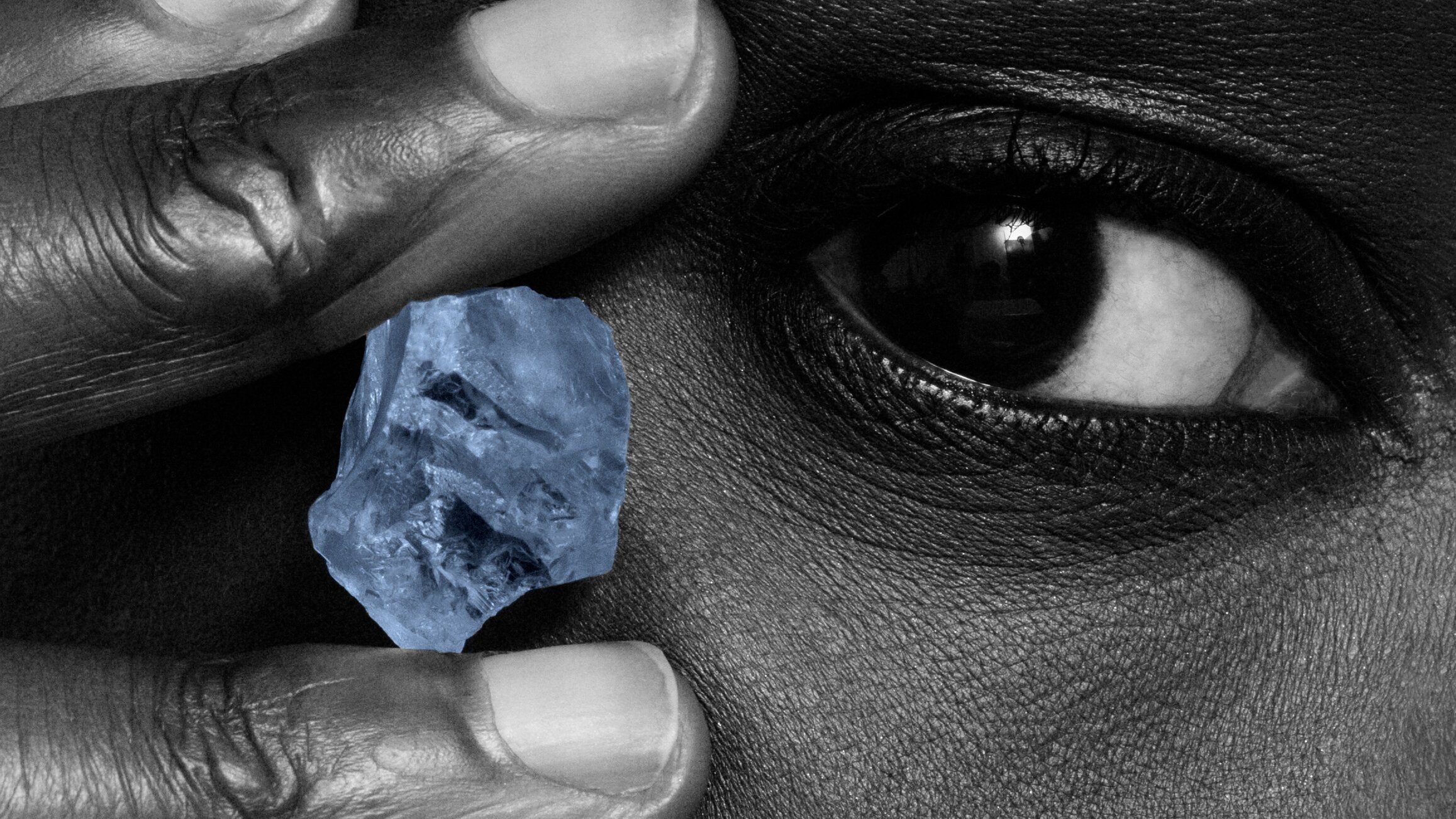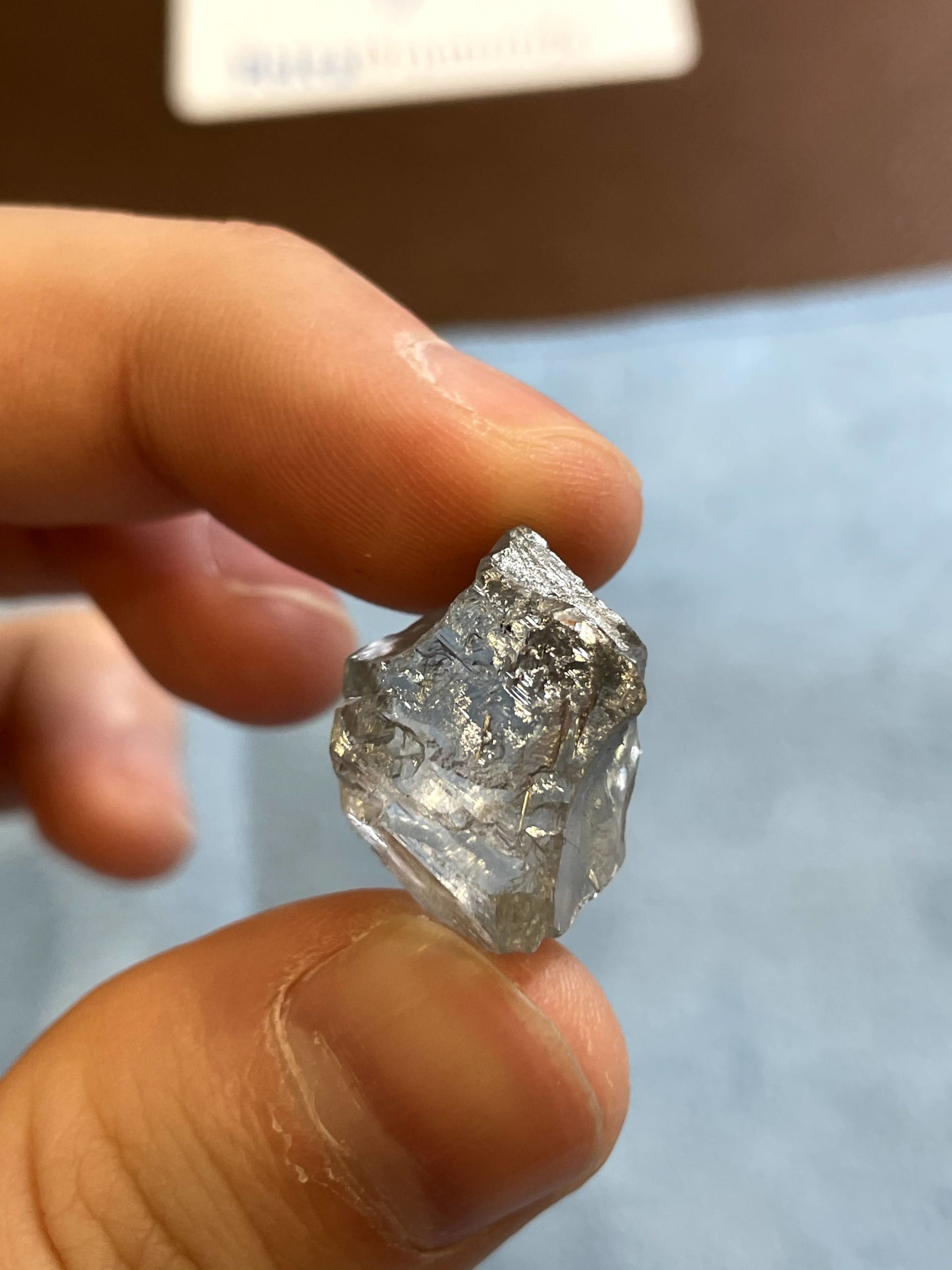The Letlapa Tala Collection: Five Extraordinarily Rare Rough Blue Diamonds

Why do, every year, over ten million people flock to the Louvre to see the Mona Lisa? And more than five million look up at the ceiling of the Sistine Chapel? It’s because they are seeking something rare. Something they can’t see anywhere else in the world. After all, there is great beauty in rarity.
It is this concept that has made diamonds so alluring to humans for thousands of years. And while every diamond is one-of-a-kind, there is perhaps no diamond rarer and more alluring than a natural blue diamond. It’s so hard to come by, in fact, that in their entire careers, most diamond world insiders never get a chance to be up close and personal with a single one.

What Makes Blue Diamonds So Rare?
Natural white, yellow and even pink diamonds form under extreme circumstances around 100 miles below the Earth’s surface before getting blasted close to its surface by ancient volcanic eruptions.
But, because of the presence of a chemical structure marked by boron, we have learned that natural blue diamonds form much more than three times deeper in the Earth. It’s only because of plate tectonics that natural blue diamonds are able to journey remotely close to Earth’s surface. Recent studies have even linked trace elements trapped in natural blue diamonds to seawater, suggesting that these diamonds are a record of rocks from the ancient ocean floor that formed far before any life on our planet.
So how in the world did I ever find myself holding five natural blue rough diamonds weighing in at over 85 carats total?

Another Gift from the Cullinan Mine
Well, turns out that in a history-making auction, these five rare beauties better known as the Letlapa Tala Collection (which translates to “blue rock” in Northern Sotho, the predominant language spoken in the Cullinan area of South Africa where they were discovered) were being offered for sale at once. And I had the opportunity to see them at the New York City tender just before they went under the hammer.
Now it must be said that, operated by Petra Diamonds, the Cullinan mine in South Africa from which these five incredible stones were found, has a history all its own. Known as the world’s most important source of natural blue diamonds, the many famous diamonds found here since it opened in 1902 include the Cullinan Diamond, the largest gem-quality diamond ever found at 3,106 carats; two of the most important diamonds cut from the Cullinan Diamond rough were the First and Second Star of Africa which are part of The Crown Jewels in the Tower of London.
Ranging from 25.75 carats to 9.61 carats in size, the blue diamonds in the Letlapa Tala Collection may not have been as unfathomably massive, however each did classify as the coveted “type IIb”, meaning they were void detectable nitrogen in their chemical structure and tended to display exceptional transparency. Natural blue diamonds of this quality are so uncommon that they command the very highest values.

Soaring Natural Blue Diamond Auction Prices
In 2015, the 12 carat Blue Moon of Josephine (cut from a 29 carat rough blue diamond from the Cullinan Mine) sold for $48.5 million, which remains the world record price per carat ever paid for a diamond. And when the Letlapa Tala Collection went to its highest bidder at a cool $40.36 million in November 2020, it was right up there
The Letlapa Tala diamonds long history will continue as they are sold to someone who can cut and polish them into their most beautiful forms. I, for one, can’t wait to see the finished product.

